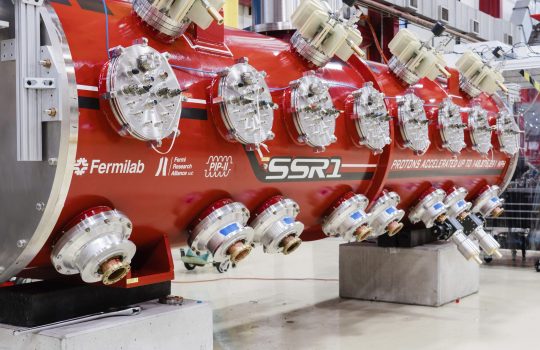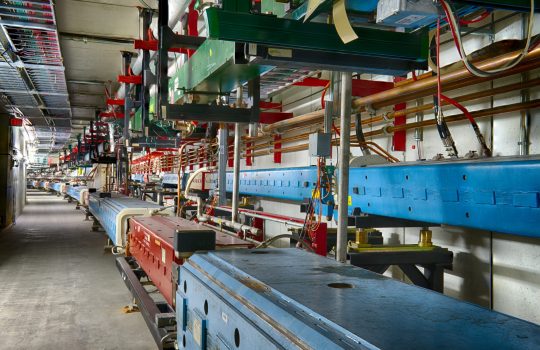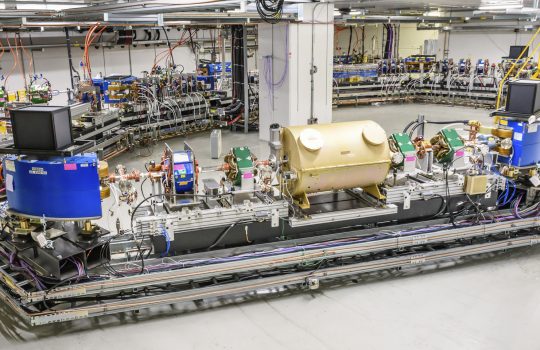Testing wraps up for first Fermilab-designed cryomodule for PIP-II accelerator
- accelerator
- beam
- Bhabha Atomic Research Center
- cavity
- cryomodule
- Deep Underground Neutrino Experiment
- DUNE
- France
- India
- international engagement
- Italy
- people
- PIP-II
- Poland
- superconducting technology
- United Kingdom
A Fermilab team has completed tests for a crucial superconducting segment for the PIP-II particle accelerator, the future heart of the Fermilab accelerator chain. The segment, called a cryomodule, will be one of many, but this is the first to be fully designed, assembled and tested at Fermilab. It represents a journey of technical challenges and opportunities for innovation in superconducting accelerator technology.






